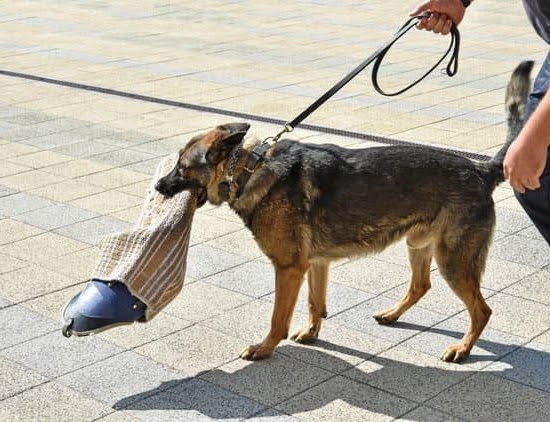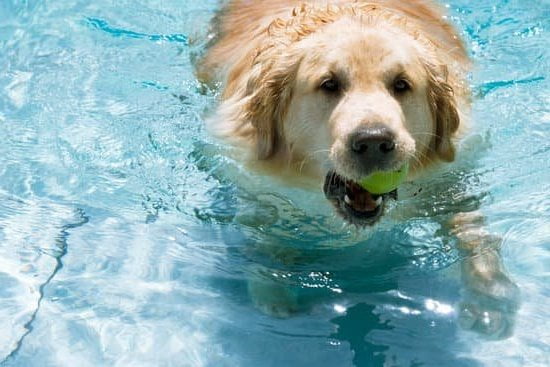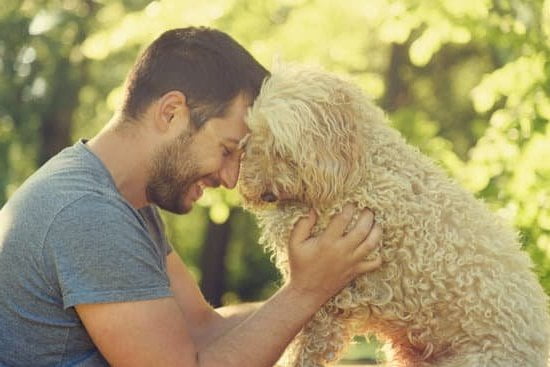Introduction
Aggressive small dogs can be very difficult to manage, as their size does not limit their capacity for aggression and destructive behavior. Fortunately, it is possible to train even the most aggressive small dog by establishing boundaries and providing clear direction and repetition. Doing so can help you create a safe home environment where everyone, human and canine alike, can feel secure.
When it comes to training your small, aggressive dog, remember that it will take patience and consistency on your part. It might take weeks or months of repeating the same cues before you begin to see long-term changes in your pup’s behavior. Try to remain positive throughout the process—picking up on your moods may influence how receptive your pup is to learning.
Start simple by teaching basic commands like sit and stay but be sure that you provide lots of consistent praise when they do obey correctly; this way they’ll be more likely to listen next time. For aggressive issues like excessive barking, lunging or snapping at strangers, start by simply redirecting their attention away from the potential threat. Provide some kind of reward so your pup knows that obeying was a good idea! If the aggressive behavior persists then try taking things further with more intensive techniques such as donning muzzle for potentially threatening situations or enrolling in an obedience class for more personalized instruction with a qualified professional trainer. Additionally make sure that during training sessions all family members are involved in reinforcing commands consistently so everyone understands what behaviors are expected from the dog thus creating an atmosphere conducive to positive reinforcement.
Identifying Aggressive Behavior
Aggressive behavior can be caused by a number of different things in small dogs, and it is essential to identify the type of aggression in order to properly deal with it.
The three most common types of aggression are territorial, fear-based and possessive. Territorial aggression is usually a response to intruders or unfamiliar sources that they perceive as a threat. Fear-based aggression is often caused by a strong feeling of fear and insecurity, which will cause them to lash out in an attempt to protect themselves. Finally, possessive aggression is a result of protective instincts regarding certain items or people that they have secured for themselves.
When it comes to recognizing aggressive behavior in small dogs, there are some key indicators. Typically, if the dog is growling, snapping or baring its teeth while showing signs of raised hackles on their neck and back then this could mean aggressive behavior. Additionally, if they become overly defensive with toys or food then that could signal aggressive behavior as well. If you’re able to recognize when your small dog is displaying any of these behaviors early on then you’ll be better prepared to take the necessary steps towards training them out of this aggression.
Preparing for Training
Before you begin training your aggressive small dog, there are a few important things to consider. First and foremost is safety. If your dog has shown any signs of aggression toward humans or other dogs, it is crucial that you keep the environment controlled and avoid any situation that could put yourself or others in danger. Next, it is important to understand the underlying causes of your pet’s aggression – anxiety or defensive behavior can greatly impact how a dog reacts to certain situations and should be addressed before embarking on training. Lastly, it is essential for trainers to have a positive attitude during the process. Positive reinforcement techniques will allow you to focus on teaching acceptable behaviors rather than punishing bad ones; positive reinforcement helps build trust between owner and canine and ultimately helps the process go smoother with better results. Preparing the right mindset and attitude will help ensure success with your training regimen.
Establishing Boundaries
One of the key steps in training aggressive small dogs is to establish proper boundaries. Clear rules and expectations must be established so your furry friend will know what they are allowed to do, and when they are allowed to do it. To ensure your dog understands these boundaries and sticks to them, you must provide consistent rewards and repercussions for their behavior.
Rewards can include treats, extended cuddle time, additional outdoor play time, or any other activity that your pup loves! For example, if your small dog is reluctant to walk on a leash without trying to pull away or bark aggressively at passers-by, reward them with a treat whenever they walk peacefully while on a loose leash. In turn, the consequence for any aggressive behavior will need to be immediate. Yelling or scolding will not help set clear boundaries – instead, firmly guide the pup back on course and redirect their attention in another direction. Over time, your pooch will learn which behaviors are acceptable and start responding more positively when walking on a leash.
De-Stressing and Socializing
De-Stressing: For aggressive small dogs, it is important to provide a low-stress environment where they can interact in play and walk. This includes avoiding loud noises, sudden movements, and large crowds during their walks or playtime. Keeping them in an area that is peaceful and without distractions is key to helping your dog feel more at ease and less fearful while interacting with their surroundings.
Tools to Socialize: One of the most effective ways to socialize an aggressive small dog is through positive reinforcement techniques. Reward them with treats, praise, and affection when they make good choices. Additionally, use leashes and carrier bags when taking them outside so they feel more secure by being close to you. Lastly, introduce slowly your pet to other people and animals; this will give them a chance to get acquainted with new environments without feeling overwhelmed or threatened.
Importance of Walks: Taking your aggressive small dog for walks on a regular basis is essential for its own wellbeing as it helps burn energy and keep him fit physically. Additionally, your pup will have the opportunity to explore new smells, sights sounds; this will also help them learn how to socialize properly in order for it to be comfortable around other living creatures like other people or animals. Finally, more often than not physical activity helps de-stress our four-legged companions which further ensures a balanced lifestyle in between proper petting sessions at home with its owners.
Enforcing Control in Different Situations
When dealing with an aggressive small dog, it is important to keep control in different situations. This means being able to handle aggressive and challenging behaviors no matter the environment or setting. Different strategies can be used depending on the situation.
In a home setting, the most effective way of controlling aggression is by utilizing positive reinforcement training methods. Rewards, such as treats or verbal praise, should be given when desired behaviors are observed in order to teach the dog what behavior is acceptable. Behavioral commands like “sit,” “down,” ”stay” and “come” should be reinforced often so that the dog knows its boundaries and expectations. It is also important to establish leadership within the household by providing consistent guidance and displaying calm assertiveness towards the dog. Aggressive reactions should not be tolerated at any time and owners need to remain patient throughout the process; repetition and consistency are key for dominating an aggressive behavior in this setting.
In outdoor settings, distractions like other people, animals or loud noises can fuel aggression in dogs, but with patience and perseverance this can be managed over time. An owner needs to maintain control of their pet at all times by using leash techniques such as walking them alongside on one side rather than allowing them to pull ahead. The guidance of a certified trainer may help teach owners how to move quickly out of situations where their dog might become overly excited or angry due to triggers exercised outside of the home. Containment devices such a muzzles can also help control aggression if deemed necessary under certain circumstances; however if used inappropriately they could further agitate a pet so it is important for owners to research usage before beginning any containment routine for their animal companion.
Understanding Dog Behavior
When training aggressive small dogs, it’s important to understand dog behavior. Dogs understand body language and will often mirror their owner’s behavior. Therefore, it’s important that the owner remain calm and confident when interacting with the dog. Any aggression the dog displays should be met with a firm but gentle refocus of the animal’s attention so their behavior can be redirected in a positive way. It may help to have treats or toys on hand in order to reward good behavior and give directions. As soon as a dog exhibits an aggressive response, redirecting their focus should become priority one.
It is also important to note that punishing aggressive behaviors will not work in this situation. If punishments such as yells, strikes, or squirting them with water are used, they will only reinforce fear or anxiety which can make the situation much worse in the long run. Instead, simply ignore any inappropriate behaviors and reward when your dog follows direction or responds positively by focusing on commands given. Praising your pup with soft verbal cues like “yes” or “good boy/girl” can also be very effective at reinforcing positive actions. Additionally, encouraging playtime with other friendly animals can help bolster trust and strengthen obedience from an early age. After all, socializing is as essential for puppies as it is for people!
Professional Help
If your small dog is exhibiting aggressive behavior it can be difficult and stressful to manage on your own. It can be especially hard when you don’t understand why your pet is behaving the way they are. If you find yourself in this situation, it may be time to seek professional help.
It is important to consult a vet or qualified trainer who specializes in helping dogs overcome aggression and has experience in working with smaller breeds. They can help you better understand the triggers behind your pet’s behavioral problems and design a tailor-made training plan that suits their individual needs. Most professionals will suggest regular obedience classes, as well as teaching your dog basic communication skills that will enable them to feel secure and comfortable in any environment.
In order to get the most out of professional help, you should ensure that those providing it are knowledgeable about small breed aggression and have the qualifications necessary for working with such dogs. It may also be beneficial for you to set realistic expectations for their training plan, as well as keeping to a strict schedule for lessons in order to give yourself and your dog the best possible chance of success.
Conclusion
Training aggressive small dogs is an important step in promoting good behavior and keeping them safe. It starts by understanding their triggers and body language to better recognize when they are feeling threatened or uncomfortable. This allows us to redirect their energy into something more productive, like providing distraction or teaching them calmness commands. We can also use positive reinforcement along with punishment to set parameters for acceptable behaviors without instilling fear in our pets. Having a consistent schedule with regular playtime and walks will help prevent boredom and maintain overall mental health, as well as building trust between pet and owner. Overall, the key to training aggressive small dogs is finding out what works best for each individual pup, being consistent throughout training, and using Love & Patience!

Welcome to the blog! I am a professional dog trainer and have been working with dogs for many years. In this blog, I will be discussing various topics related to dog training, including tips, tricks, and advice. I hope you find this information helpful and informative. Thanks for reading!





